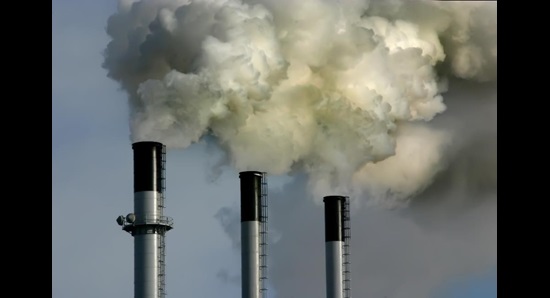- Natural Disasters
- Energy Technologies
- Energy Technologies
- Diesel
- Natural Gas
Why Does Diesel Win in Places like Puerto Rico? It’s 9,000 Times Better Than Solar PV by This Metric

In the aftermath of natural disasters like Hurricane Irma, there is much talk about how renewables are the ideal backfill to replace and modernize electric grids. Indeed, renewables like solar PV and wind, along with energy storage, grab headlines due to their falling costs, low lifetime carbon emissions, and general excitement about their deployment and future potential. Why, then, was the largest immediate post-storm addition a pair of 25 MW diesel-fired turbines installed by APR Energy?
Compactness Is Key
In addition to dispatchability and fast install (the plant was operational in 15 days), a key factor is energy density, defined here as daily energy output per acre of plant area. By Guidehouse Insights numbers, combustion turbines like the ones installed by APR can produce as much as 6,200 MWh in a day using 1 acre of land. Compare that to solar PV, which is smaller by a factor of 9,200; based on National Renewable Energy Lab data, solar PV can be expected to produce about 0.67 MWh in an acre. The figure below indicates energy density by corresponding bubble size. The numbers vary by project, but the contrast is stark. Reciprocating generator sets (gensets) are compact, more distributed than the turbines, and a key part of the recovery (with the installation of 375 generators noted by this article). There are also headlines citing fast installation of renewables in microgrids, a clear trend of the future. Still, many of the high output, dense systems tend to be based around fossil fuels.
Energy density has two components. Power density (along the vertical axis) indicates the footprint needed for energy production in any instant of time. Combine that with the second component—capacity factor, along the horizonal axis—and fossil-fueled generation can look exceptionally appealing thanks to its availability nearly 24/7. A crucial advantage is the system’s dispatchability, the ability to provide power on demand.
Energy and Power Density by Technology: Daily Delivered Energy (MWh) in 1-Acre Footprint,
North America: 2017

*Assumes 6-hour (150 MWh) battery discharges 80% of capacity, once daily.
**Equivalent hours/day at max output, assuming consistent demand for power.
Sources: Bloom Energy, Caterpillar, General Electric, National Renewable Energy Laboratory, NGK
Island nations are often constrained on space and need to fit generation among existing infrastructure—especially after a disaster. Many are among the most cramped on Earth, with Japan, Taiwan, the Philippines, Puerto Rico, and many Caribbean nations falling in the top one-sixth of all countries by population density. Though rooftops are available for solar PV, they can be small and may need retrofits. Offshore wind is quickly becoming more appealing, too (though if the grid goes down, it can’t provide onsite, distributed power).
Hybrid Systems Hold Promise
While diesel has the advantage of compactness and dispatchability, it is also expensive, challenging to transport long distances, and emits lots of greenhouse gases and other criteria pollutants like NO and particulate matter. Natural gas holds many of the same advantages while avoiding many of the cons of diesel; where it is available, it often outperforms diesel. Dual-fuel turbines and gensets can be even more attractive—the Puerto Rico turbines produce power at 18.15 cents/kWh on diesel and less on natural gas when it’s available.
Still, natural gas faces similar hurdles to those noted for diesel (albeit lower ones). In many cases, the optimal system is hybridized—relying on a mix of fossil fuel and renewables. Despite all the buzz around solar, storage, and other renewables, reliance on only those technologies is often cost prohibitive. Hybrid microgrids based around diesel or heavy fuel oil generation can often see fuel savings of 10%-30% or more with the addition of new technologies like solar PV, wind, and storage.